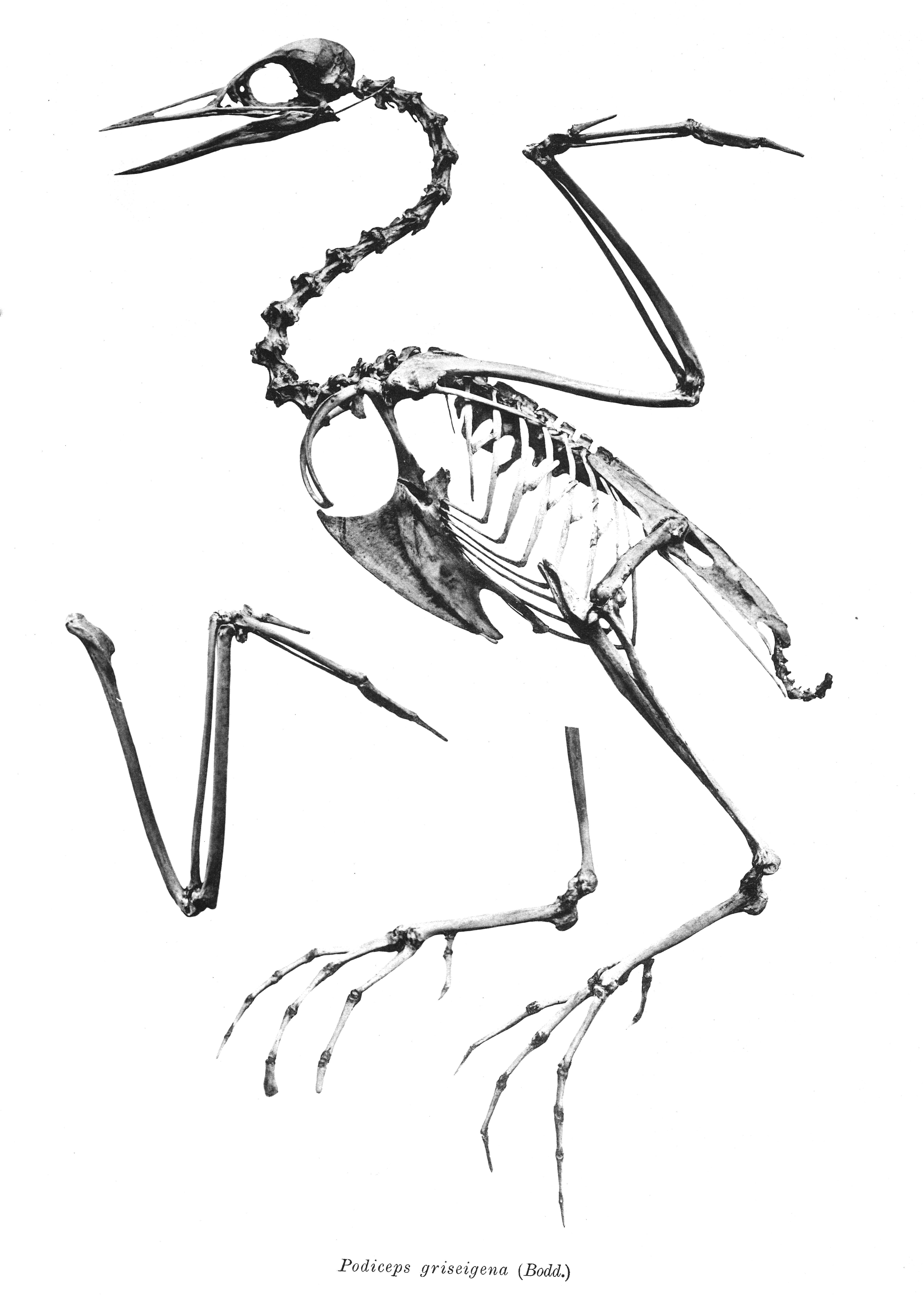|
Podiceps Discors
''Podiceps discors'' is an extinct species of grebe from the Upper Pliocene of western North America. It was similar to the black-necked grebe. History The specimens were collected in the summer of 1951 from Kansas, United States by Claude W. Hibbard and the species was named in 1967 by Bertram G. Murray. The species name "discors" refers to how different it is from other members of ''Podiceps''. Description The holotype ( UMMP 29079) is a complete left tarsometatarsus, which is comparable in size to tarsometatarsi of the black-necked grebe and of the females of the horned grebe (''P. auritus''). It differs from them by its internal condyle is not internally flared, and the head is small relative to the length of the bone. Further when viewed at the medial perspective, the tarsometatarsus of ''P. discors'' is not as long or it is directed so far anteriorly as seen in other species of the genus. Additional material has been found in Idaho which represent a complete femur (UMMP ... [...More Info...] [...Related Items...] OR: [Wikipedia] [Google] [Baidu] |
Grebe
Grebes () are aquatic diving birds in the order (biology), order Podicipediformes (). Grebes are widely distributed freshwater birds, with some species also found in sea, marine habitats during Bird migration, migration and winter. Most grebes fly, although some flightless species exist, most notably in stable lakes. The order contains a single family (biology), family, the Podicipedidae, which includes 22 species in six extant genus, genera. Although, superficially, they resemble other diving birds such as loons and coots, they are most closely related to flamingos, as supported by morphology (biology), morphological, molecular and paleontology, paleontological data. Many species are monogamy in animals, monogamous and are known for their courtship displays, with the pair performing synchronized dances across the water's surface. The birds build floating vegetative nests where they lay several eggs. About a third of the world's grebes are listed at various levels of conservatio ... [...More Info...] [...Related Items...] OR: [Wikipedia] [Google] [Baidu] |
Coracoid
A coracoid is a paired bone which is part of the shoulder assembly in all vertebrates except therian mammals (marsupials and placentals). In therian mammals (including humans), a coracoid process is present as part of the scapula, but this is not homologous with the coracoid bone of most other vertebrates. In other tetrapods, it joins the scapula to the front end of the sternum and has a notch on the dorsal surface which, along with a similar notch on the ventral surface of the scapula, forms the socket in which the proximal end of the humerus (upper arm bone) is located. The acrocoracoid process is an expansion adjacent to this contact surface, to which the shoulderward end of the biceps brachii muscle attaches in these animals. In birds (and generally theropods and related animals), the entire unit is rigid and called scapulocoracoid. This plays a major role in bird flight. In other dinosaurs, the main bones of the pectoral girdle were the scapula (shoulder blade) an ... [...More Info...] [...Related Items...] OR: [Wikipedia] [Google] [Baidu] |
Fossil Taxa Described In 1967
A fossil (from Classical Latin , ) is any preserved remains, impression, or trace of any once-living thing from a past geological age. Examples include bones, shells, exoskeletons, stone imprints of animals or microbes, objects preserved in amber, hair, petrified wood and DNA remnants. The totality of fossils is known as the ''fossil record''. Though the fossil record is incomplete, numerous studies have demonstrated that there is enough information available to give a good understanding of the pattern of diversification of life on Earth. In addition, the record can predict and fill gaps such as the discovery of ''Tiktaalik'' in the arctic of Canada. Paleontology includes the study of fossils: their age, method of formation, and evolutionary significance. Specimens are sometimes considered to be fossils if they are over 10,000 years old. The oldest fossils are around 3.48 billion years to 4.1 billion years old. Early edition, published online before print. The ob ... [...More Info...] [...Related Items...] OR: [Wikipedia] [Google] [Baidu] |

